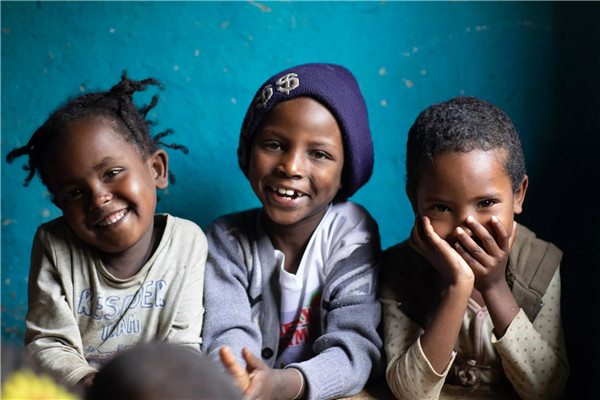World Bank and CCG launching World Economic Prospects in China
[English]
[Chinese]
On Jan 19, 2021, Beijing, the Center for China and Globalization (CCG) co-hosted a webinar with the World Bank to launch the January 2022 edition of “Global Economic Prospects” in China and to analyze the latest trends in the Chinese and global economies. This was the only event in which the World Bank released and discussed the report outside its headquarters in Washington D.C.
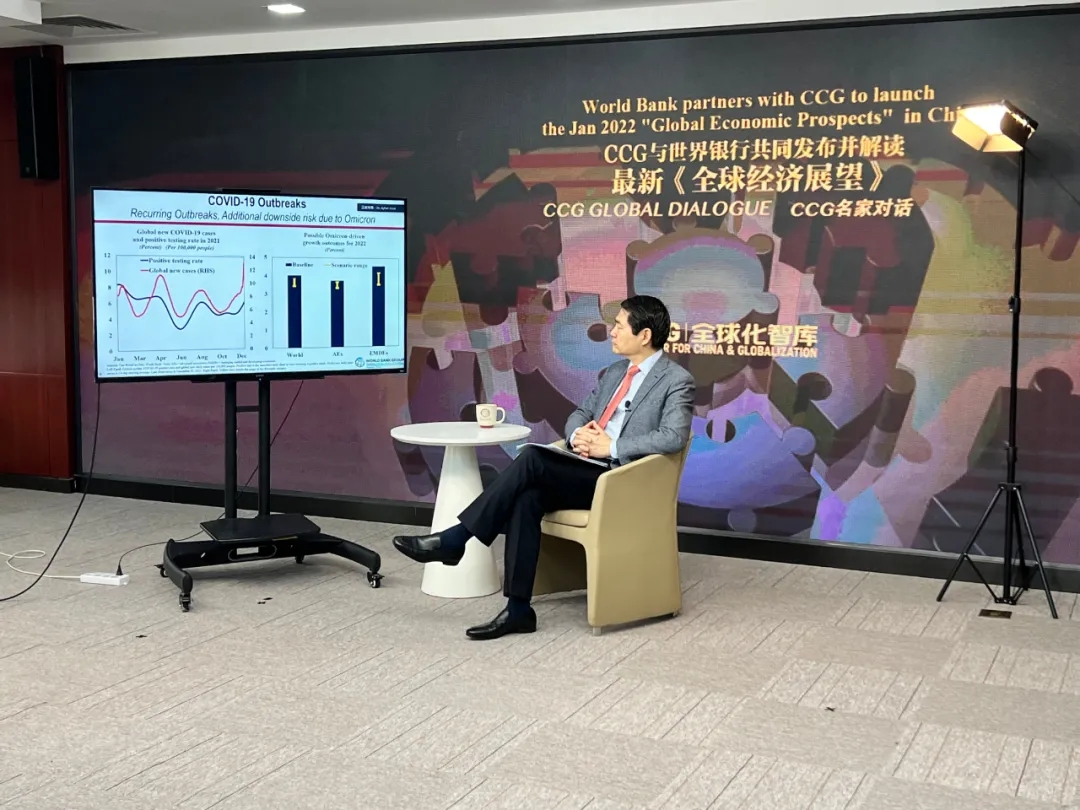
“Global Economic Prospects” is the World Bank Group’s flagship report on global economic development and prospects, with a focus on emerging markets and developing economies, published semiannually. It presents in-depth analyses of topical issues in global and regional economies, and serves as an important reference for governments and businesses around the world. This is the fourth time that CCG and the World Bank have partnered to hold an official launch and discussion of the report in China.
The discussion was attended by Dr. Wang Huiyao, CCG President; Dr. Ayhan Kose, Chief Economist and Director of the World Bank’s Prospects Group; Dr. Martin Raiser, the World Bank’s Country Director for China, Mongolia and Korea; and Ms. Ekaterine Vashakmadze, Senior Country Economist at the World Bank’s Prospects Group.
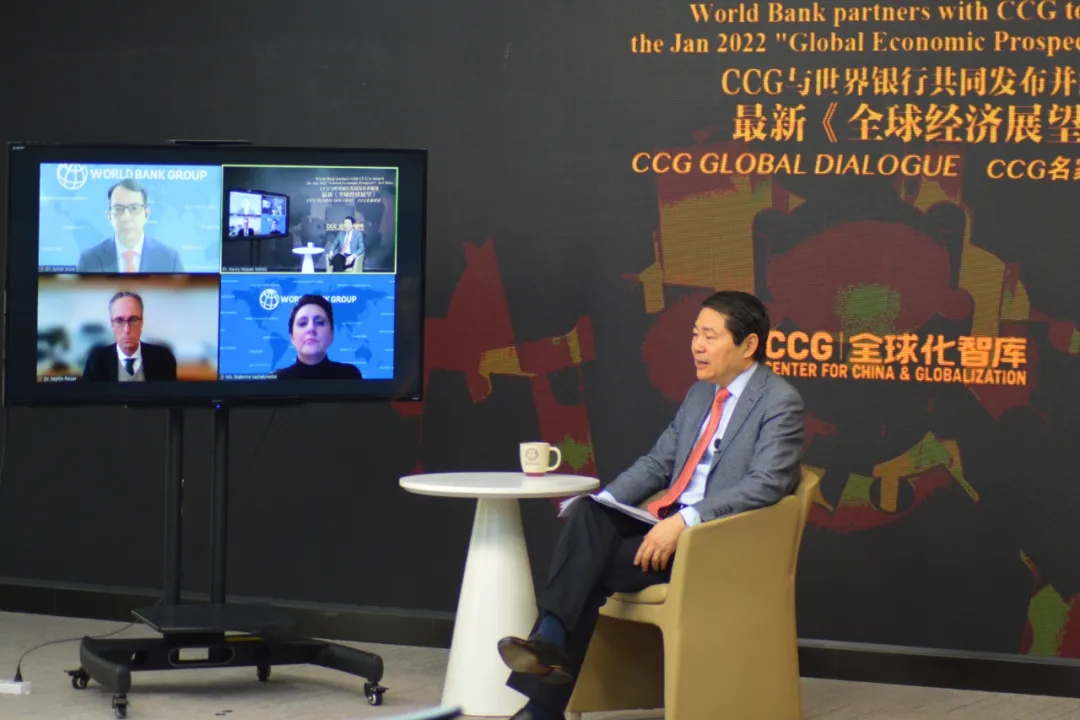
As COVID-19 continues to evolve and spread around the world, the global economy is expected to see a sharp slowdown. According to the latest “Global Economic Prospects” report, the world economy is facing a set of challenges including surging inflation, high debt, intensified inequality and policy uncertainty. The global economy is expected to grow by 4.1% in 2022 and 3.2% in 2023. Meanwhile, China’s post-pandemic recovery has been led by increased manufacturing activity and exports and GDP growth is forecasted to be 5.1% in 2022 and 5.3% in 2023. GDP growth of developed economies such as the United States, Europe and Japan in 2022 are expected to reach 3.7%, 4.2% and 2.9% respectively. The report also discusses the need for coordinated efforts to control the pandemic and ensure more equitable access to vaccines, the urgency to foster debt sustainability in the poorest countries and sustain the recovery of persistent inflation, as well as measures that should be taken to tackle climate change and reduce inequality.
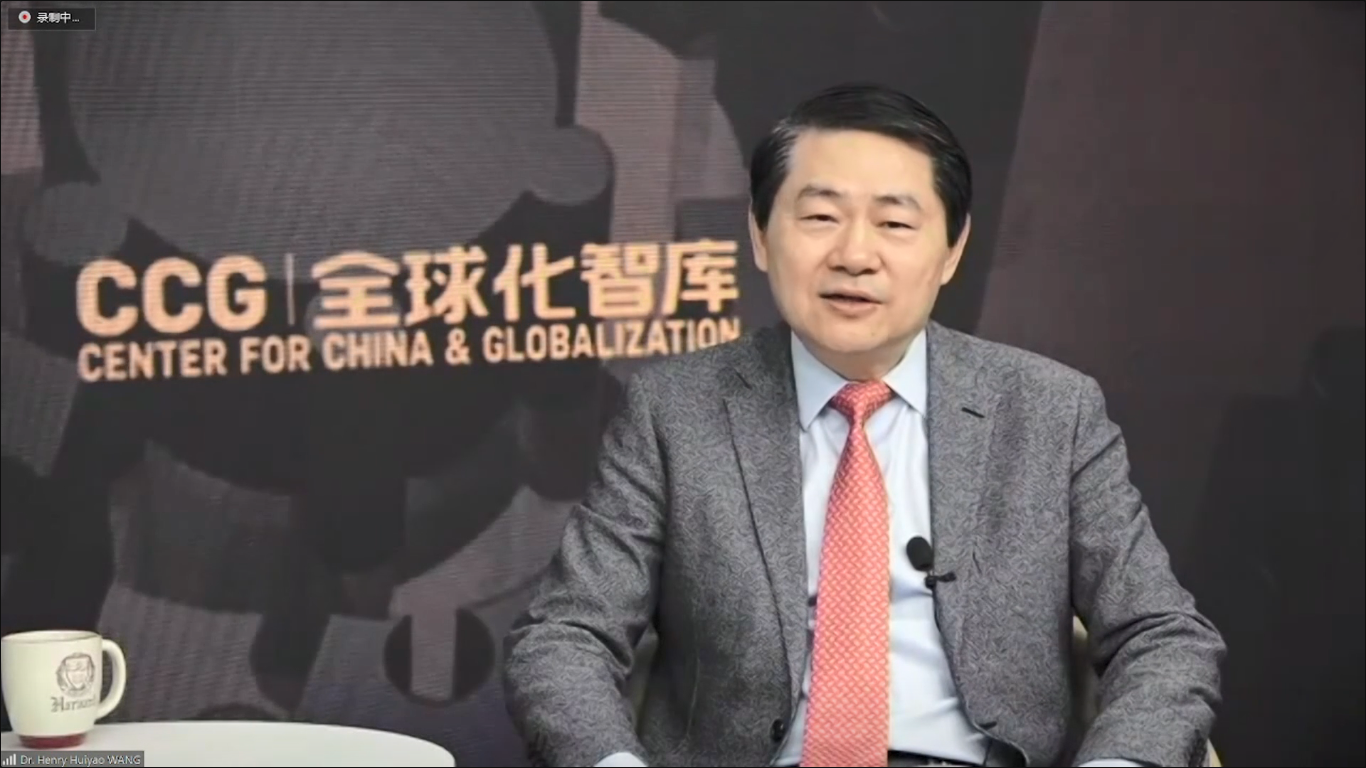
CCG President Dr. Wang Huiyao noted that China enjoyed a rapid period of recovery throughout 2021, with its GDP growth reaching 8.1%. China’s imports and exports also reached historical highs. However, both China and the world are still facing the challenge of inequality. As the World Bank has pointed out, the already widening gap of inequality worsened during the COVID-19 pandemic. It is important for policymakers to reconsider their policies and help the least affluent of the society. China has proposed and has been working on a “common prosperity” initiative, which is meant to benefit both the domestic and the global economy. Dr. Wang also pointed out that the G20 has agreed on a Global Corporate Minimum Tax of 15% with the aim of ending the “race” of countries competing to lower the corporate tax rate and resulting in benevolent and healthy global economic development. In regard to the most recent COVID-19 variant, Omicron, Dr. Wang stressed that countries need to find practical solutions to control the virus while ensuring the restoration of mobility and the openness of the economy. Although the ultimate impact and effects of this pandemic remain unclear, guidance from the WHO and international cooperation are urgently needed and countries should refrain from unproductive infighting.
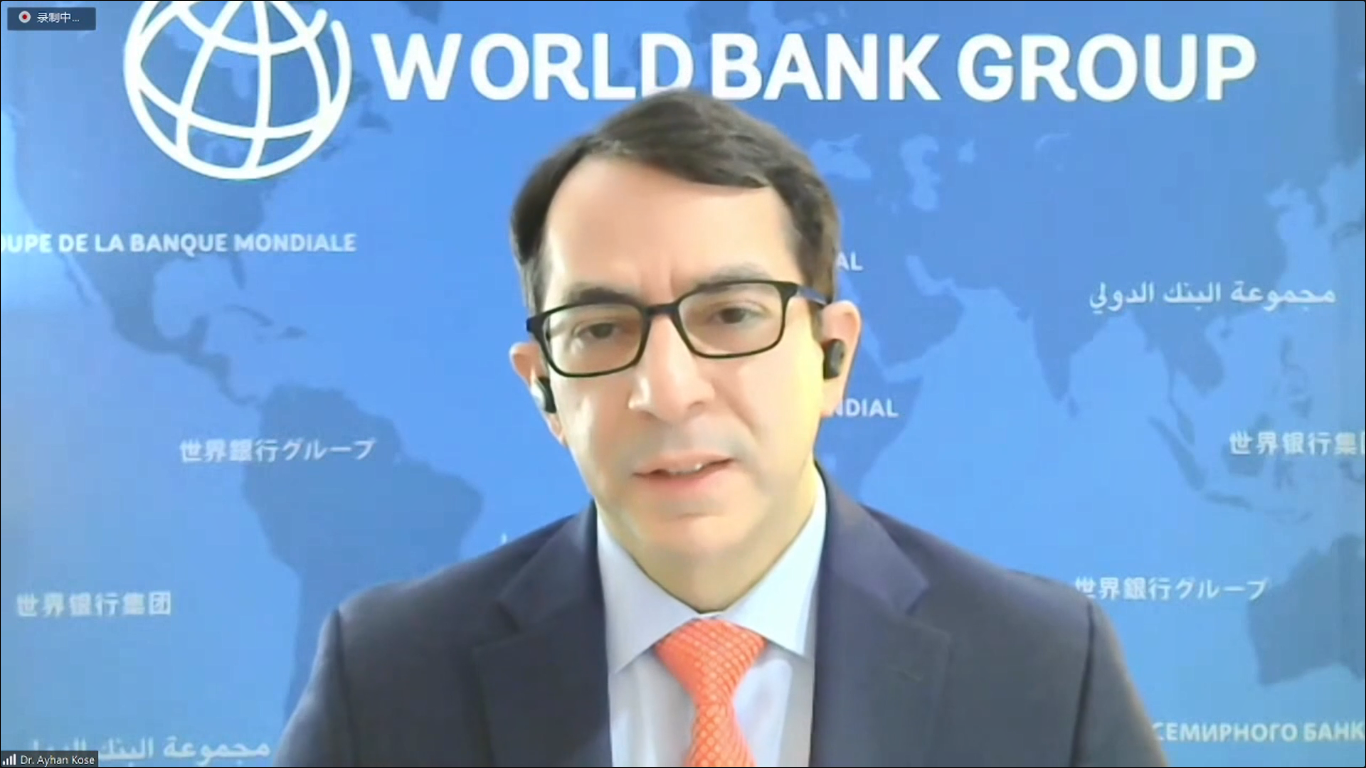
Dr. Ayhan Kose, Chief Economist and Director of World Bank’s Prospects Group said that after the economic rebound in 2021, the global economy will enter a “broad-based slowdown”. Global economic growth will fall from 5.5% in 2021 to 4.1% in 2022 and even further to 3.2% in 2023. Global recovery will remain uneven in advanced countries and emerging markets developing economies (EMDE) due to a lack of policy spaces. The expected global slowdown is mainly a result of the “withdrawal of fiscal and monetary policy support”, as well as a “dissipating demand worldwide”. Dr. Kose also pointed out that another impact of Covid-19 will be increased poverty and inequality, while recurrences and new variants, such as Omicron, will continue to affect global interactions, but the negativity is expected to decline through time. He also listed multiple hidden problems that the world is facing including the pandemic, inflation pressures, supply chain bottlenecks, climate change, financial stress, debt challenge, and weaker long-term growth. Under these circumstances, a “commodity price cycle with larger booms than slumps” will remain. In order to ensure green, resilient, and inclusive growth, he recommends that countries implement policies that target pandemic control, macroeconomic stability, crisis preparedness, climate change, and inequality.

Dr. Martin Raiser, World Bank Country Director for China and Mongolia and Director for Korea first acknowledged that China’s efforts to control the pandemic have ensured that its recovery faster has been than the rest of the world, resulting in strong export performance that offset weak domestic demand. However, with the global environment tightening significantly and new outbreaks of COVID, China’s economic growth has shown signs of slowing in the second half of 2021. China’s growth rate is expected to be close to the predicted rate, which the World Bank predicts will be 5.1% in 2022. It is recommended that China recalibrate its policies and put more emphasis on consumption, services, and green industries, in order to handle risk factors including the pandemic, global supply disruption, tightening global financial conditions, and downturn in the real estate sector. Dr. Raiser further discussed the long-term structural challenges China is facing, including “difficult rebalancing act as its aims to transition to high-quality growth”. He listed issues such as the pandemic, property market slowdowns, stagnant productivity growth, demographic headwinds, a decline in the dynamism of firms, inequality and slowing social and educational mobility. According to Dr. Raiser, China needs to rebalance its external and domestic demand, and move from industry-led growth to greater reliance on consumption and services. It may also need to increase the role of markets and the private sector, and ensure the transition from a high to low-carbon economy. In general, Dr. Raise suggested that China needs to continue its de-risking and structural reform, to make sure that growth over the medium term is more sustainable, greener, and inclusive.
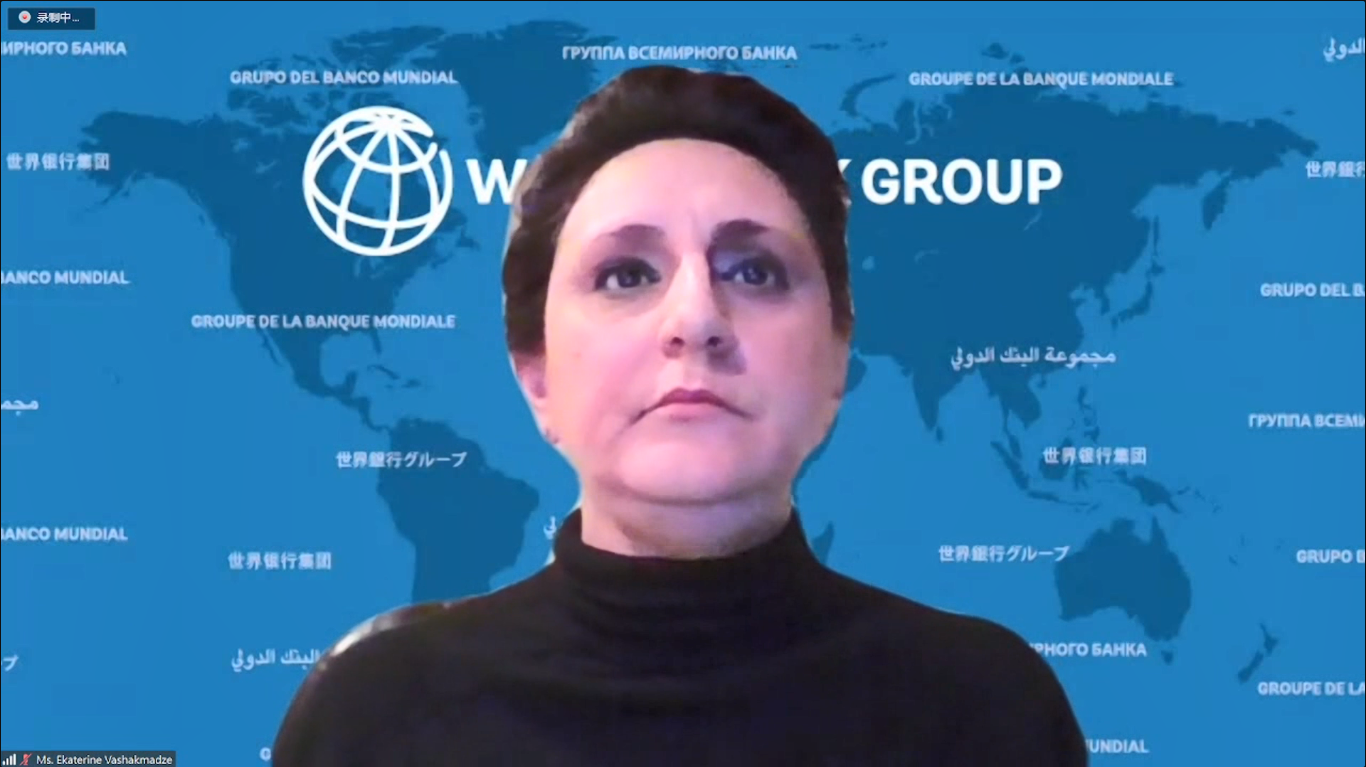
In terms of global pandemic policies, Ms. Ekaterine Vashakmadze, Senior Country Economist in the Prospects Group in the Equitable Growth, Finance, and Institutions Practice Group at the World Bank, suggested that countries need to consider the risks for short-term and long-term growth, as well as how they will complicate their economic situation. In the short-term, COVID-19 will delay China’s rebalancing of investment and consumption, hitting industrial production which has increased the price of commodities and will ultimately drive global inflation. But in the longer term, the strict pandemic policies have driven China’s productivity, which requires openness to ideas, investment, technologies, and movement of people. Referring to the natural disasters such as the volcanic eruption in Tonga, Ms. Vashakmadze pointed out that climate risk is one of the most prominent challenges to the world as a whole and causes even more disproportional damage to small island economies, especially in the midst of a global pandemic. There has been a 2% income divergence between advanced countries and island countries in terms of economic growth. After natural disasters, trade may return, but the downturn in tourism will take longer to recover.
